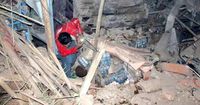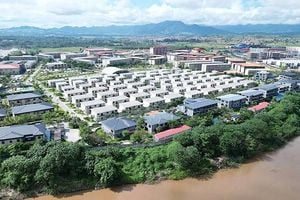In the early hours of November 3, 2025, the ground beneath northern Afghanistan shook violently, sending shockwaves through the city of Mazar-e Sharif and its surrounding provinces. The United States Geological Survey (USGS) reported a powerful 6.3 magnitude earthquake, its epicenter near Mazar-e Sharif—a city of roughly 523,000 people, famous for its shrines and historic sites. The quake struck at a depth of 28 kilometers (17.4 miles), a detail that, according to the USGS, often signals a higher risk of significant casualties and widespread disaster.
As the sun rose, the scale of the devastation began to emerge. Health officials, including spokesperson Sharafat Zaman of the Afghan Health Ministry, confirmed that at least 20 people had lost their lives and more than 500 were injured. "Based on the information we have so far, 534 people have been injured and more than 20 fatalities have been taken to hospitals in Samangan and Balkh provinces," Zaman told journalists, as reported by AFP and Reuters. The numbers, officials warned, could climb as rescue teams reached remote villages in Balkh and Samangan, some of the worst-hit provinces.
For the people of Mazar-e Sharif, the terror was immediate and visceral. Residents scrambled out into the streets, fearing the collapse of their homes, while dust and debris filled the air. Mohammad Rahim, a survivor from Tashqurghan district near the quake's epicenter, described the chaos: "When we finally got outside, there was so much dust in the air that we couldn’t see anything," he told Reuters. His family was among the lucky ones—his mother and brother, trapped in the rubble, were eventually freed by rescue workers and neighbors.
Yet, the physical destruction was not limited to homes and infrastructure. The city’s famed Blue Mosque, a 15th-century landmark and one of Afghanistan’s holiest sites, suffered significant damage. Pieces from one of its minarets broke off and lay scattered across the mosque’s grounds, a heartbreaking sight for a country whose cultural heritage has already endured so much. Balkh province spokesperson Haji Zaid confirmed to Reuters that the mosque, believed to be the burial site of the cousin and son-in-law of the Prophet Mohammad, had been damaged, though the main structure remained standing.
Images shared by the Afghan Red Crescent and verified by Reuters showed rescuers digging through rubble and pulling survivors from the debris. Military rescue teams, dispatched by the Ministry of Defence, worked through the night to clear and reopen the main road between Mazar-e Sharif and the town of Kholm, rescuing people stranded by the destruction. Footage released by the ministry captured the grim reality—rescuers pulling the body of a young girl from beneath the dirt, a stark reminder of the human cost of natural disasters.
The quake not only brought loss of life and injury but also caused widespread power outages, with the national power supplier, Da Afghanistan Breshna Company, reporting disruptions across the country, including in the capital Kabul. Poor communication networks and damaged infrastructure, especially in Afghanistan’s mountainous regions, hampered immediate disaster response—a challenge that has plagued the country in previous emergencies. In many cases, it took hours or even days for authorities to reach far-flung villages and assess the full extent of the damage.
As the rescue and relief efforts unfolded, the United Nations mission in Afghanistan pledged its support. "We stand with the affected communities and will provide necessary support," the UN said in a statement on social media, joining a chorus of international concern. Aid agencies have already warned that hunger and hardship are rising in Afghanistan, a country grappling with a humanitarian crisis exacerbated by drought, economic restrictions, and the mass displacement of citizens from neighboring Iran and Pakistan.
Afghanistan’s vulnerability to earthquakes is well-documented. The country sits atop two major active fault lines, making it particularly prone to seismic activity. According to France 24 and BBC, large tremors are common, especially along the Hindu Kush mountain range near the meeting point of the Eurasian and Indian tectonic plates. The construction of many Afghan homes, often shoddily built and weakened by decades of war, only compounds the risk.
This latest disaster comes just two months after a 6.0 magnitude earthquake struck eastern Afghanistan in August 2025, killing more than 2,200 people and causing an estimated $183 million in damage to buildings and infrastructure, as reported by the World Bank. That quake wiped out entire mountainside villages and left thousands homeless. Similar tragedies have unfolded in recent years: a major quake in western Herat in 2023 and another in eastern Nangarhar province in 2022 each killed hundreds and destroyed thousands of homes.
For the Taliban government, which has faced three major deadly earthquakes since taking power in 2021, the challenges are mounting. The dramatic drop in foreign aid following the Taliban’s takeover has left Afghanistan’s economy reeling. The government is now forced to respond to disasters with fewer resources and less international support. As Hamdullah Fitrat, deputy spokesman for the Taliban authorities, wrote on X (formerly Twitter), "Numerous homes have been destroyed, and significant material losses have been incurred." The quake is just the latest in a series of crises testing the resilience of Afghanistan’s people and institutions.
Despite these obstacles, local and international agencies are mobilizing to deliver aid and support. Hospitals in the area have been put on standby, and rescue teams are working tirelessly to find survivors and provide medical care. But as the hours tick by, the risk of the death toll rising looms large, especially as information from remote villages trickles in.
Afghanistan’s recent history is a litany of hardship, from decades of war to natural disasters and economic collapse. Yet, time and again, its people have shown remarkable resilience in the face of adversity. As the dust settles over Mazar-e Sharif and its battered Blue Mosque, the world watches and waits, hoping that the worst is over—and that help will arrive in time for those still trapped beneath the rubble.





